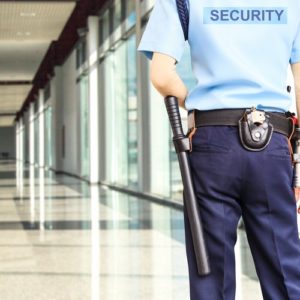 Louisiana courts have adopted a duty-risk analysis in determining whether liability exists in a tort case. Namely, a plaintiff must prove that (1) the defendant owed a duty of care; (2) the defendant failed to conform to the duty; (3) the defendant’s conduct was a cause-in-fact of the plaintiff’s injuries; (4) the defendant’s conduct was a legal cause of the plaintiff’s injuries; and (5) actual damages. Christy v. McCalla, 2011-0366 (La. 12/6/11).
Louisiana courts have adopted a duty-risk analysis in determining whether liability exists in a tort case. Namely, a plaintiff must prove that (1) the defendant owed a duty of care; (2) the defendant failed to conform to the duty; (3) the defendant’s conduct was a cause-in-fact of the plaintiff’s injuries; (4) the defendant’s conduct was a legal cause of the plaintiff’s injuries; and (5) actual damages. Christy v. McCalla, 2011-0366 (La. 12/6/11).
In Louisiana, stores do not generally have a duty to protect their customer from a third party’s criminal activity. See Harris v. Pizza Hut of Louisiana, Inc., 455 So.2d 1364, 1371 (La.1984). Where, however, a duty to protect others against criminal misconduct has been assumed, liability may be created by a negligent breach of that duty, see Mundy v. Department of Health and Human Resources, 620 So.2d 811 (La.1993) and Harris v. Pizza Hut of Louisiana, Inc., 455 So.2d 1364 (La.1984). The Louisiana Supreme Court carved out another narrow exception in 1999.
While not the insurers of their patrons’ safety, business owners in New Orleans and other cities in Louisiana do have a duty to implement reasonable measures to protect their patrons from criminal acts when those acts are foreseeable. Posecai v. Wal-Mart Stores, Inc., 752 So.2d 762, 766-67 (La. 1999).
A party must then focus on whether the 3rd party criminal act causing harm was foreseeable. To address this, the Louisiana Supreme Court adopted a balancing test to determine whether a business owner owed a duty to provide security for their patrons:
The foreseeability of the crime risk on the defendant’s property and the gravity of the risk determine the existence and the extent of the defendant’s duty. The greater the foreseeability and gravity of the harm, the greater the duty of care that will be imposed on the business. A very high degree of foreseeability is required to give rise to a duty to post security guards, but a lower degree of foreseeability may support a duty to implement lesser security measures such as using surveillance cameras, installing improved lighting or fencing, or trimming shrubbery. . . The most important factor to be considered is the existence, frequency and similarity of prior incidents of crime on the premises, but the location, nature and condition of the property should also be taken into account. Posecai v. Wal-Mart Stores, Inc., 752 So.2d 762, 767-68 (La. 1999).
Free Case Evaluation
More About HHK
Other News
Offshore work is one of the most dangerous professions in […]
After someone suffers sexual abuse, what happens next? One common […]
Court Says Louisiana “Lookback Window” Clergy Abuse Lawsuit Against Diocese of Lafayette Can Proceed
The Louisiana Third Circuit Court of Appeal upheld a lower […]
The nervous system is a complex network of specialized cells […]







